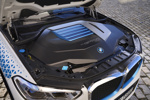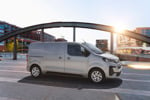Thought to be the reason behind more than 11 million working days lost each year, the all-too-familiar motoring ailment costs British industry a staggering £5 billion. Yet most of the pain and cost could be saved, according to latest research findings.
After a study showed that more than 78% of drivers do not sit in the optimal position for comfort and safety, the RAC Foundation asked for advice from posture expert Dr Alison Harvey, of the Ayr Chiropractic Centre.
She said: 'Motorists who are stressed tend to concentrate their tension in the necks, shoulders and stomachs. In the short term, this can lead to physical pain and discomfort, but over a longer period, it can contribute to high blood pressure and heart disease.
'In addition, the need for regular breaks while driving cannot be overemphasised. Not only do legs need a rest, but this is also essential for the back, as the discs do not have their own blood supply and so rely on regular movements for the supply of nutrients.
'Ideally, no-one should drive for more than an hour without getting out of the car to walk around. This also improves concentration and so makes for safer journeys.'
In the case of back pain setting in, the sooner it is treated the faster it is likely to recover, Harvey said. Chiropractors specialise in spinal care and are trained both to diagnose and treat back problems.
If you feel unwell, have numbness, pins and needles or weakness in your legs or find that back pain is getting worse for no apparent reason, it is particularly important to seek professional advice as soon as possible, experts say.
Harvey added: 'It is important to have enough space when driving. Cramped conditions can lead to unnecessary aches and pains and muscle spasms and, in the longer term, these can all contribute to chronic back problems.
'Drivers who have their seats reclined too much will have to crane their necks and this not only leads to increased muscle tension but also increases the risk of whiplash injuries in hard braking or emergency stops. The stretching needed to reach both the steering wheel and controls can lead to shoulder and midback pain.'
Conversely, a posture that is too erect can put a severe strain on the low back muscles and joints. In severe cases, this may contribute to wear and tear injuries and possible sciatic-type leg pain – and if an accident happens, drivers using this posture set themselves up for both low back injuries and nasty whiplash.
In a bid to educate fleets about problems associated with back pain, the Association of Car Fleet Operators (ACFO) recently sponsored a leaflet aimed at promoting stretches for drivers to help with discomfort and fatigue.
The booklet, produced by the Chartered Society of Physiotherapy in conjunction with Professor Mark Porter and Dr Diane Gyi, of Loughborough University, and Helen Williams, of HJ Consultancy, came in the wake of a project carried about by the ergonomic experts called 'Reducing back pain in high-mileage business drivers'.
ACFO director Stewart Whyte said: 'There is already a considerable amount of information and guidance for employers concerning the physical risks to employees' health at work involving computers or manual handling.
'But until now, there has been little information for high-exposure business car drivers and their managers.'
After criticism of seating comfort in the last model Vectra, Opel-Vauxhall invested more than E75 million (about £40 million) to make sure the latest version of the car could claim to have the best seats in its class. As a result, the Vectra became the first high-volume model to have seats that won an orthopaedic award for being kind to the occupant's back.
Specialist medical associations in Germany behind a healthy back campaign awarded their seal of quality to the driver's seat, which features eight-way electrical adjustment, four-way lumbar support and built-in air conditioning.
A company spokesman said: 'This seal of quality is granted only to products that have demonstrated to an independent testing commission, made up of scientists and experts from the medical profession, that they are capable of protecting the back against ill-effects, so we are delighted with this accolade.
'Since the car was a totally new development, it was possible to pursue such aims as enhanced seating comfort, easy operation of the controls, structural strength and the highest possible level of occupant safety, yet at the same time reduce the weight of the body. All our cars in future will also benefit from these principles,' he said.
To add to the occupant's comfort, the company's engineers increased the height of the front seat back by 57 millimetres to provide more support in the shoulder area. An extra 16 millimetres of longitudinal adjustment benefits occupants with long legs.
Achieving the best position















Login to comment
Comments
No comments have been made yet.